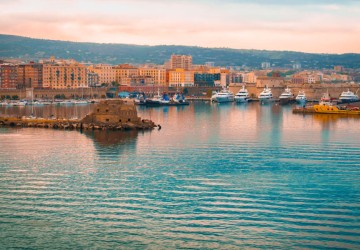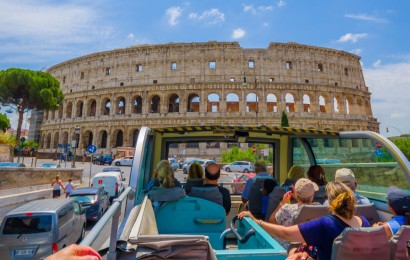Civitavecchia is a city rich in history, traditions and natural beauty.
The port of Civitavecchia is now considered among the most important in Italy and the beating heart of the city of Civitavecchia.
It is an important port of Rome from which depart or arrive many cruise lines.
History of Civitavecchia
The birth of Civitavecchia is due to an Etruscan settlement of which we have evidence in the writings of Pliny the Younger. Centum Cellae, was the name by which Pliny wrote in a letter in 107 A.D. referring to the place where there was the construction of a large port.
What the meaning of the name "Centum Cellae" was the subject of many discussions. There are those who believe it refers to the inlets of the coast, and those who believe it refers to the rooms of the Villa of Trajan.
It was the emperor Trajan who wanted its construction in 106 A.D. as an alternative to the port of Ostia for the landing of food supplies for the city of Rome. The construction of the city took the Roman style with the construction of the cardo massimo (the current Corso Marconi). Centumcellae was equipped with basilicas, warehouses, aqueduct, baths.
In the late 1800s, following the destructive invasion by the Saracens, the population began to leave the city. Following a town assembly, it was decided to build a new, stronger and more powerful city on the ruins of the original city. The new city was called Civita Vetula (Old Town), which corresponds to the current Civitavecchia.
The port of Civitavecchia and its role
The port was built around 107 A.D. to a design by the architect Apollodorus of Damascus. The structure was surmounted by two opposing towers: Bicchiere and Lazzaretto.
With the fall of the Roman Empire, the port suffered continuous domination by the papacy, municipal powers and frequent Saracen raids.
It was under the papacy that the port of Civitavecchia experienced a remarkable development. Were built:
- the Forte Michelangelo
- the Lighthouse
- the Arsenale del Bernini
- the crenellated walls by Pier Paolo Florian
- the fountain of Vanvitelli
- Porta Livorno
The bombing of World War II destroyed most of these structures.
Today the port of Civitavecchia is a multifunctional port divided into two large areas:
- the area to the south dedicated to the tourism, the diportismo and the cruises
- the area to the north destined to the commercial traffics, the peach and the cabotage.
The Etruscans and the Roman Age
Not everyone knows that Civitavecchia and like all the upper Lazio was the "house of the Etruscans" and that’s why you can admire many archaeological finds that have emerged and visited for some years!
Among these, there are definitely 4 places worth knowing:
- La Mattonara
- Torre Valdaliga
- The Villa Pulcherrima
- The Etruscan Necropolis of La Scaglia
The “Mattonara" is an important and unique archaeological area and can be visited. Inside the site there are archaeological finds from prehistoric times, materials from the early Iron Age and an Etruscan necropolis and even a maritime villa of imperial age.
Not far from the site of the Mattonara, the popular belief tells that the Emperor Nero stayed there; hence the name to an ancient circular pit dug in stone and which was nicknamed "Hole of Nero".
"Torre Valdaliga" as "Villa Pulcherrima" are the ancient "holiday resorts" of the Roman elite that since the second century B.C. have built parallel to the coast along the Aurelia road system.
The villas were built as luxurious places and stood in areas with panoramic views of absolute beauty on the sea and with architectural elements of Roman and imperial times. The archaeological finds testify, imposing mosaics, frescoed plasters, precious marble and thermal environments.
The "Etruscan Necropolis de la Scaglia" is a very important archaeological testimony because in the necropolis were found more than seventy Etruscan tombs ranging from IX BC to all the VI each of which tells a fascinating story, now accessible and open to visitors following an important work of conservation implemented by 2019 by the Roman Archaeological Group.
Forte Michelangelo
To protect the port of Civitavecchia from continuous attacks, in 1508 Julius II entrusted Bramante with the construction of Forte Michelangelo.
The Forte Michelangelo is a large fortress with four angular towers and the Maschio octagonal. According to local tradition, the Maschio was designed by Michelangelo Buonarroti from which precisely the name "Forte Michelangelo".
The bastions are called San Paolo, San Pietro, San Romolo and San Giulio. The eastern bastion has the symbol belonging to the coat of arms of Pope Julius II: an oak tree.
Discover Civitavecchia in a unique way with our Panoramic Hop-on Hop-off Bus Tour!

